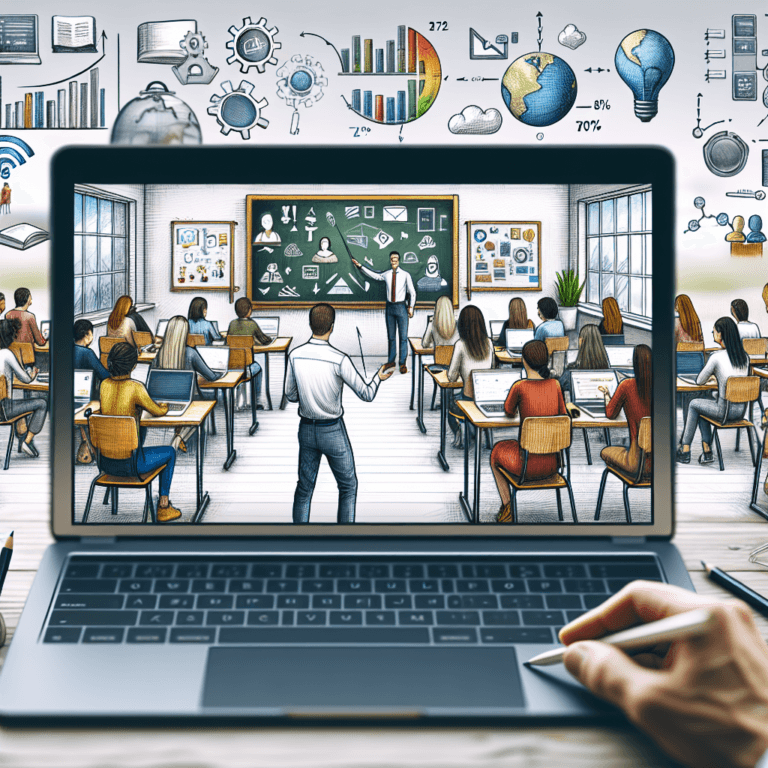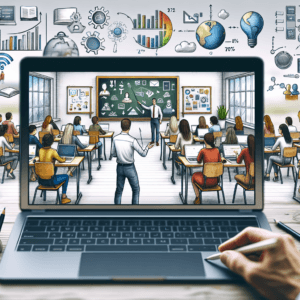Innovative Strategies for Effective Distance Teaching
As educational paradigms continue to evolve, distance teaching has become a vital component of modern learning. With the rise of technology and the necessity for flexible learning environments, educators face the challenge of keeping students engaged and motivated while delivering quality education remotely. To meet this challenge, several innovative strategies can enhance the effectiveness of distance teaching.
Utilizing Interactive Technology
Incorporating interactive technology is fundamental to engaging students in a remote learning environment. Tools such as polls, quizzes, and breakout rooms foster active participation among learners. Platforms like Kahoot! and Slido can turn a traditional lecture into an engaging session, while breakout rooms on video conferencing platforms allow for collaborative group work. By leveraging these tools, educators can create a dynamic classroom experience that mimics in-person interactions.
Establishing a Structured Routine
Establishing a structured routine helps students feel more grounded in a distance learning environment. Regular schedules that outline class times, assignment deadlines, and check-in sessions promote accountability. Consistency allows students to develop a sense of normalcy and helps them manage their time effectively. By clearly communicating expectations and maintaining a predictable flow, educators can enhance student engagement and performance.
Facilitating Peer Collaboration
Encouraging peer collaboration among students can significantly enrich the learning experience. Collaborative projects, group discussions, and peer review sessions allow students to learn from one another and build a sense of community. Utilizing platforms such as Google Docs or Microsoft Teams can facilitate real-time collaboration, enabling students to work together seamlessly, regardless of their physical location.
Personalizing Learning Experiences
Personalization in distance teaching allows educators to cater to individual student needs. Utilizing assessments to understand students’ learning styles and preferences can inform instructional approaches. Offering choices in assignments or project topics empowers students to take ownership of their learning journey. This tailored approach not only increases motivation but also fosters a more profound connection to the material being taught.
Incorporating Multimedia Resources
Diverse multimedia resources can significantly enhance the learning experience for remote students. Videos, podcasts, infographics, and other engaging materials can break the monotony of traditional lectures and cater to various learning styles. Incorporating multimedia not only aids retention but can also spark interest in complex subjects, making lessons more enjoyable and impactful.
Prioritizing Student Well-being
Recognizing the mental and emotional well-being of students is essential in a distance learning environment. Educators should create opportunities for informal check-ins and encourage open communication. Providing resources for mental health support, along with integrating mindfulness practices into the curriculum, can foster a supportive learning atmosphere. By prioritizing well-being, educators can help students navigate the challenges of distance learning more effectively.
Leveraging Feedback
Timely and constructive feedback is crucial in maintaining engagement and guiding students in their learning. Utilizing tools such as online quizzes with instant results or providing personalized comments on assignments can help students understand their progress. Regular feedback helps clarify expectations and encourages students to take constructive steps toward improvement.
Emphasizing Real-world Applications
Linking course content to real-world applications helps students understand the relevance of their studies. Incorporating case studies, project-based learning, or guest speakers from various industries can illustrate practical applications of theoretical concepts. This strategy not only enhances engagement but also prepares students for future careers by connecting learning with real-life contexts.
Conclusion
Effective distance teaching requires creativity, adaptability, and a focus on student engagement. By implementing interactive technology, establishing routines, and prioritizing collaboration and personalization, educators can create a compelling learning experience. Moreover, emphasizing multimedia resources, student well-being, feedback, and real-world applications will not only enhance educational outcomes but also prepare students for the complexities of the future. With these innovative strategies, distance teaching can transform into a powerful and effective mode of instruction.







